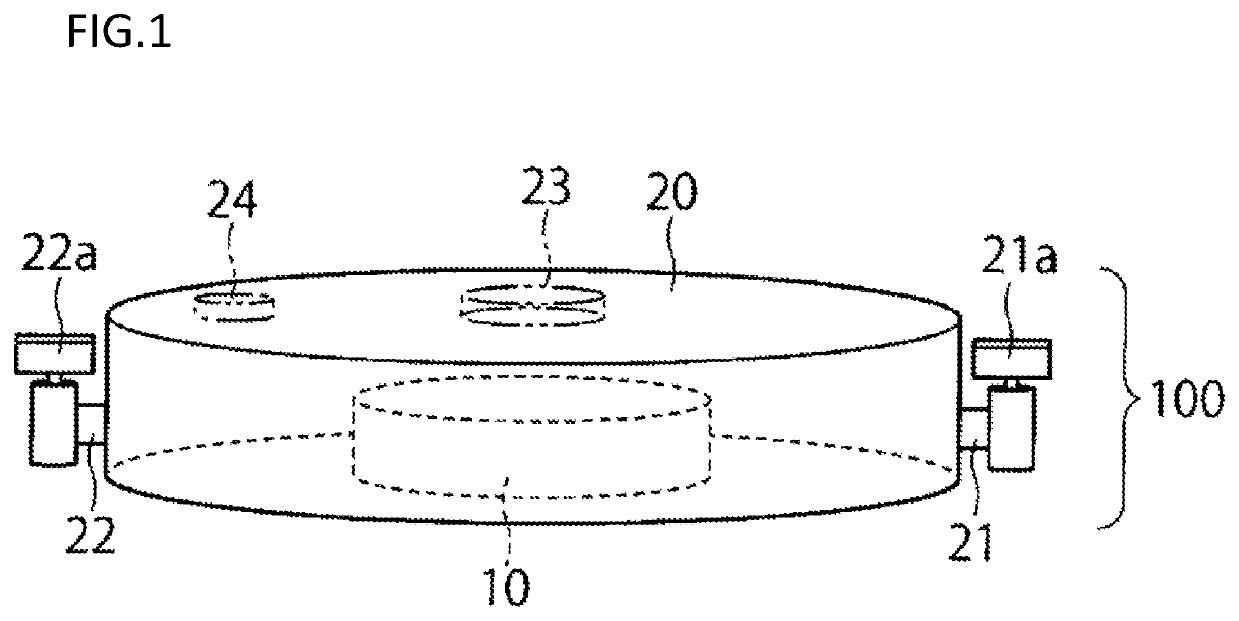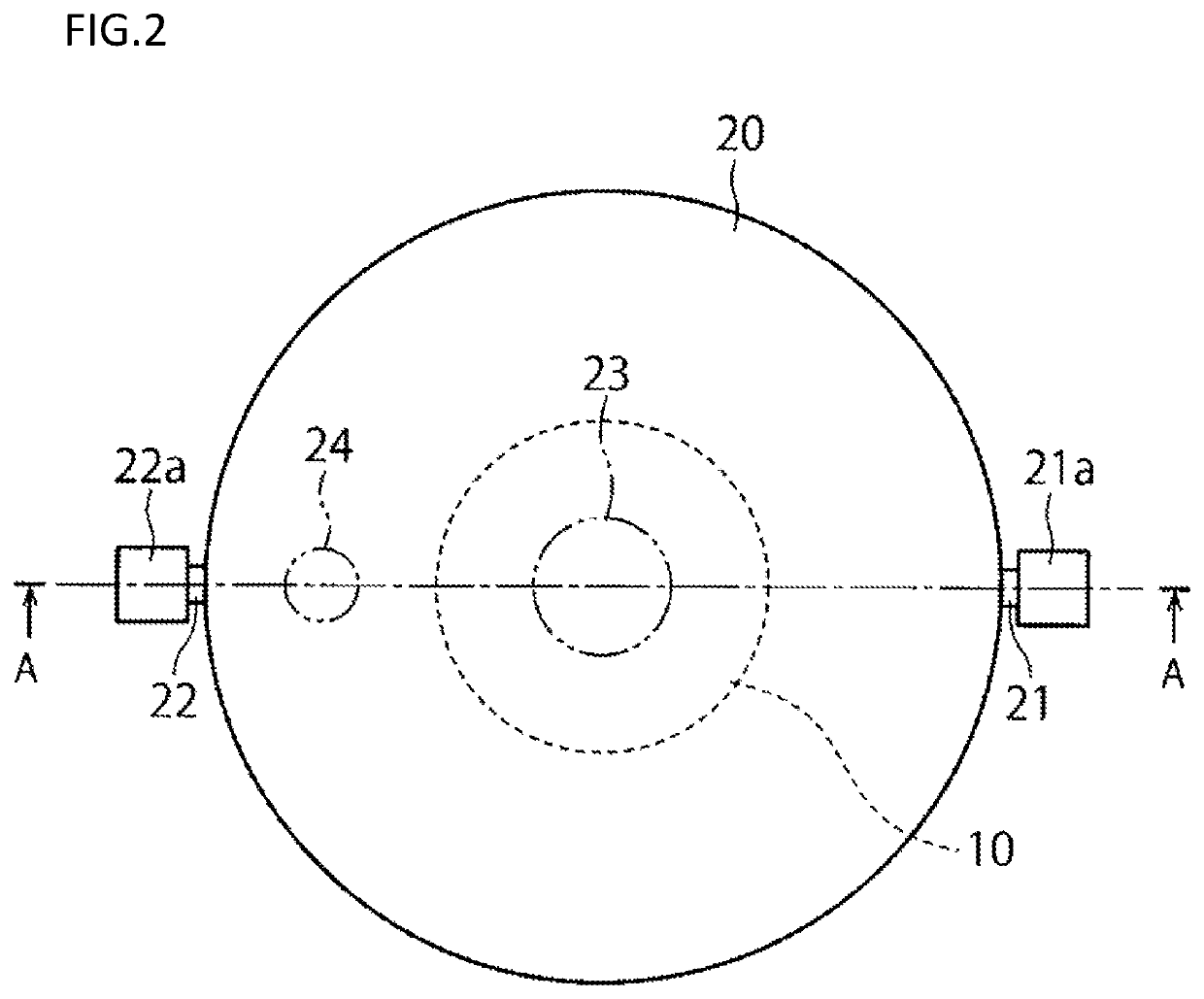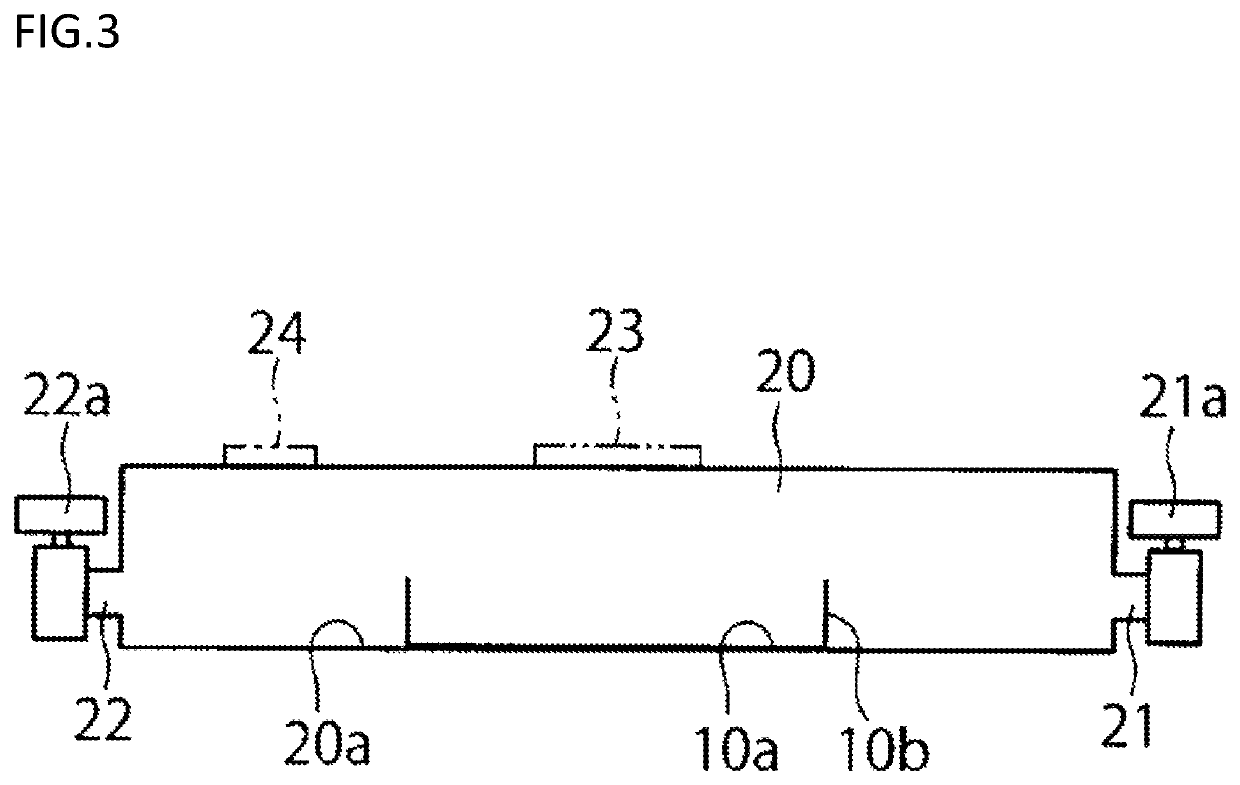Closed culture vessel for adherent cells
a culture vessel and adherent technology, applied in the field of culture vessels, can solve the problems of high construction, maintenance and running costs of facilities, and the system developed to cope with a specific cell type for price reduction is still expensive, and achieves the effects of simple and inexpensive methods, simple and inexpensive production, and easy removal of the vessel
- Summary
- Abstract
- Description
- Claims
- Application Information
AI Technical Summary
Benefits of technology
Problems solved by technology
Method used
Image
Examples
first embodiment
[0055]A first embodiment will now be described with reference to FIGS. 1 to 3.
[0056](Closed Culture Vessel)
[0057]A closed culture vessel 100 of this embodiment includes, as illustrated in FIGS. 1, 2 and 3, an openable airtight vessel 20 and a cell culture member 10 disposed within the airtight vessel and having a cell culture surface. In the airtight vessel 20, the cell culture member 10 configured separately from the airtight vessel 20 is disposed detachably from the airtight vessel.
[0058]In the airtight vessel 20, a space having a cultivation room therein, a culture solution inlet 21 through which a culture solution is introduced into the airtight vessel 20, and a culture solution outlet 22 through which the culture solution is discharged from the airtight vessel 20 are provided. The inside of the airtight vessel 20 is kept in an aseptic state, and a culture solution is aseptically introduced through the inlet 21 into the space within the airtight vessel 20. Besides, the culture s...
second embodiment
[0091]Next, a closed culture vessel 110 according to a second embodiment will be described with reference to FIGS. 6 to 8. The closed culture vessel of the second embodiment illustrated in FIGS. 6 to 8 has the same configuration as the closed culture vessel 100 of the first embodiment illustrated in FIGS. 1 to 3 except that the form of the cell culture member 10 is different. In FIGS. 6 to 8, like reference signs are used to refer to like elements of the closed culture vessel of the first embodiment illustrated in FIGS. 1 to 3 to omit the description.
[0092]As illustrated in FIGS. 9 and 10, the cell culture member 10 used in the closed culture vessel of the second embodiment is a substrate 30 having a cell culture surface 30a. The cell culture surface 30a of the substrate 30 is preferably subjected to the surface treatment for an adhesive surface to which adherent cells can adhere. The planar shape of the substrate 30 is not especially limited, and the substrate is in the shape of pr...
third embodiment
Modification of Third Embodiment
[0101]In a modification (not illustrated) of the third embodiment, a closed culture vessel has the same configuration as that of the third embodiment illustrated in FIGS. 11 to 13 except that the form of the cell culture member 10 is different.
[0102]In the modification of the third embodiment, the cell culture member 10 is the cell culture member 10 of the closed culture vessel of the first embodiment including the bottom surface 10a having the cell culture surface and the side surface 10b extending upward from the circumferential edge of the bottom surface. Owing to the side surface 10b extending upward from the circumferential edge of the bottom surface, the bottom surface 10a having the cell culture surface can be protected from physical damage.
PUM
| Property | Measurement | Unit |
|---|---|---|
| diameter | aaaaa | aaaaa |
| diameter | aaaaa | aaaaa |
| flow rate | aaaaa | aaaaa |
Abstract
Description
Claims
Application Information
 Login to View More
Login to View More - R&D
- Intellectual Property
- Life Sciences
- Materials
- Tech Scout
- Unparalleled Data Quality
- Higher Quality Content
- 60% Fewer Hallucinations
Browse by: Latest US Patents, China's latest patents, Technical Efficacy Thesaurus, Application Domain, Technology Topic, Popular Technical Reports.
© 2025 PatSnap. All rights reserved.Legal|Privacy policy|Modern Slavery Act Transparency Statement|Sitemap|About US| Contact US: help@patsnap.com



